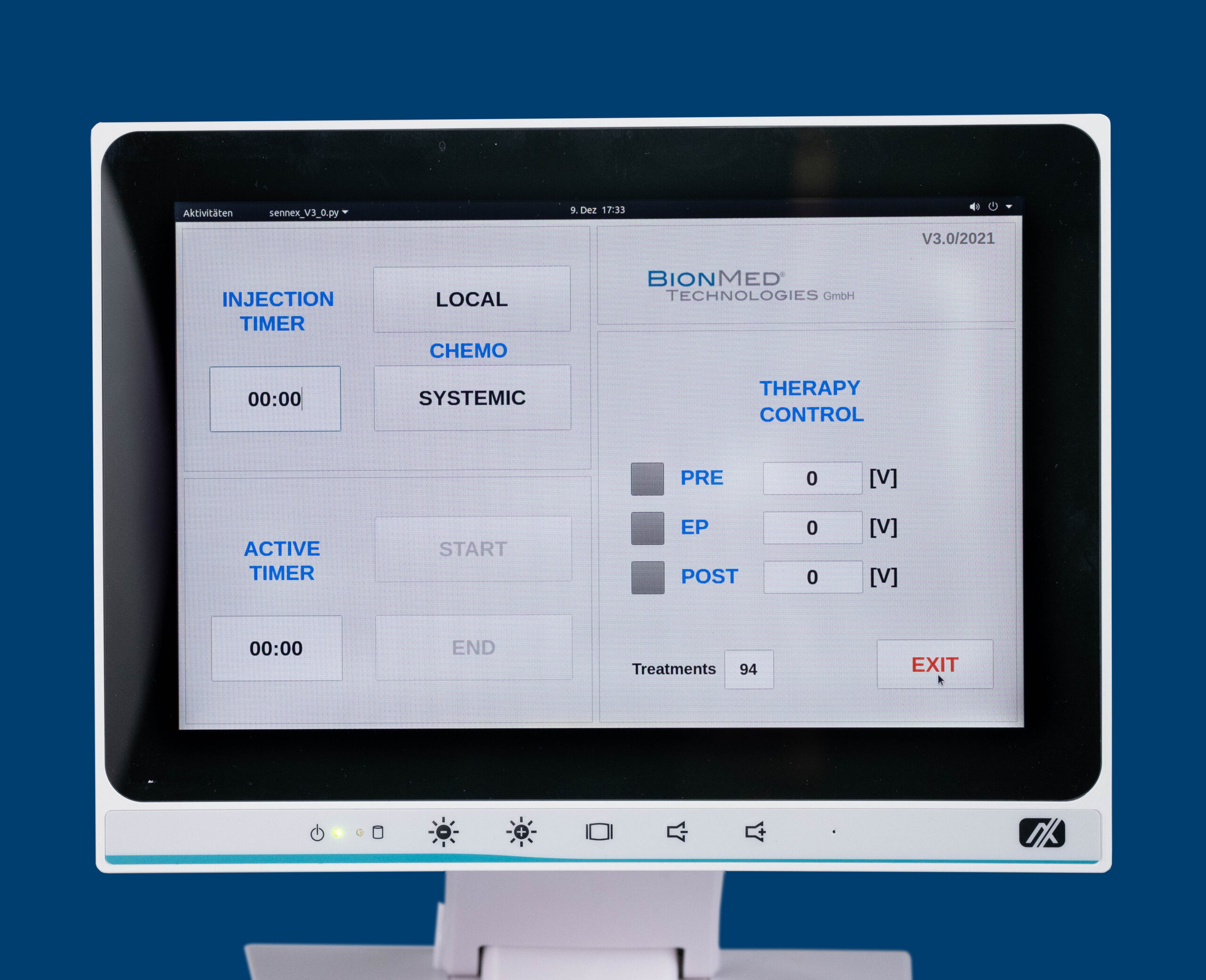

Chemotherapy enhanced with aid of electric pulses. It is applied directly at the site of the tumor.

Enhanced drug delivery with short high voltage pulses.

Usually takes 20/30 minutes. Can be done under local anaesthesia.

Previous chemotherapy, radiotherapy and surgery.

Safe and simple procedure when guidelines are followed.

Usually only mild side- effects seen after treatment.

Effect on bleeding and secretions often seen in 48 hours.

Tumor regression can be achieved in 2 to 4 weeks.

High rate of response for various tumor types.
SENNEX® Electrochemotherapy (ECT) is chemotherapy done with the aid of specific electric pulses. ECT is an approved treatment method according to ESOPE protocol and is applied directly at the site of the tumor. Short electric pulses make the cell membranes transiently permeable. As a result, the intracellular accumulation of the chemotherapeutic drug can be increased substantially. ECT is used for local treatment and control of tumors. Effects on bleeding and secretion are often seen in a few days.
Bleomycin and Cisplatin are the two drugs currently used for ECT. Bleomycin can be administered intra-tumorally or intravenously, depending on the number and size of the tumors. Cisplatin can be administered only intra-tumorally.



SENNEX® ECT is a quick procedure which can be done under local or general anesthesia. It usually takes about 20 to 30 minutes. When done under local anesthesia, the patient can be sent home after an observation period of a few hours. Patients may experience minor pain after the procedure. This pain can usually be managed with routine painkillers. Antibiotics are usually not required, but can be recommended for some patients.
SENNEX® ECT can be used independently of previous treatments like chemotherapy, radiotherapy and/or surgery. The effects are usually seen within 2 days to 4 weeks. The treatment can be repeated multiple times if necessary.


A chemotherapeutic drug is first injected either intravenously or locally in the tumor area.

The SENNEX® Electrochemotherapy (ECT) system delivers short high voltage electric pulses.

The electric pulses make the cell membrane highly permeable to the drug.

The DNA is destroyed, resulting in mitotic cell death that spares non-diving cells (muscle and nerve). ECT also significantly reduces the blood supply to the tumor cells.
1. Pain
The patient usually experiences only mild pain after treatment of cutaneous metastases. However, there can be severe pain for 1-2 weeks from treatment of tumors in the oral cavity.
2. Muscle contraction
Muscle contraction with SENNEX® Electrochemotherapy (ECT) is usually not painful, but the patient should be informed before treatment under local anaesthesia.
3. Necrosis
Necrosis is uncommon in ECT treatment of small tumors. It is more common in tumors exceeding 3 centimetres.
4. Hyper-pigmentation
Skin hyper-pigmentation is unusual, but may occur if Bleomycin is used.
OnMed
Oncology Medical Devices AB
Copyright © 2012-2025
Address
Österlanggatan 18, 11131
Stockholm, Sweden
Contact